Some of the highlights of the recent Keenan Alltech Open day in Borris, Co Carlow, were the dairy and beef seminars that ran every hour throughout the afternoon.
The beef seminar was centred on the topic of finishing cattle better, younger and faster. Animal nutritionist Gerry Giggins, along with Alltech beef nutritionist Richard Dudgeon, outlined the key components for finishing cattle correctly.
Don’t fail to prepare

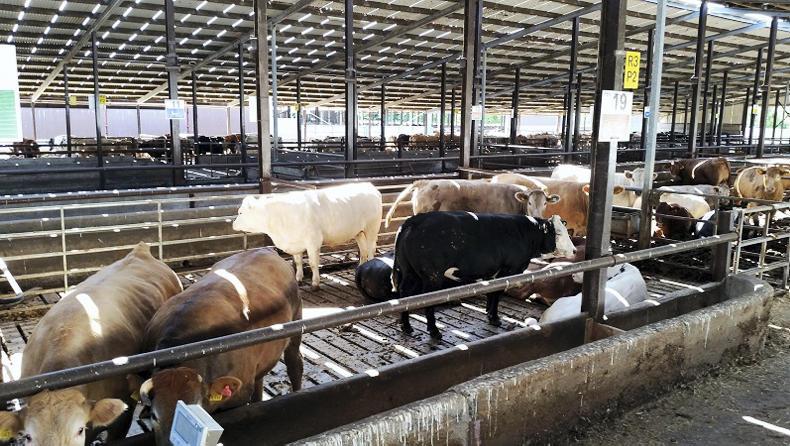
The most important aspect of finishing cattle is to have a proper plan in place. It is not just as simple as putting cattle into the shed, or leaving them on grass and throwing in concentrates at random. First of all, it should be decided what age you plan on slaughtering your animals at – and, according to Giggins, the younger the better.
The next part of a finishing plan should deal with the diet. According to Giggins “the best feed for a farmer to buy is not necessarily the cheapest feed – it is the feed that is going to make an animal reach its performance targets and keep it healthy”. A good-quality feed will contain buffer and yeast in the mix to help prevent rumen problems.
The final part of a finishing plan is one that is more often than not forgotten about – measurements. It is vital to constantly monitor the performance of cattle by measuring the weight gain of the animal, first and foremost, but also by measuring the amount of feed taken in. While measuring feed intake can be more difficult, being aware of the amount of feed being given to an animal, less the amount of feed left behind (if any), will give a pretty good indication.
Rumen health relies on water
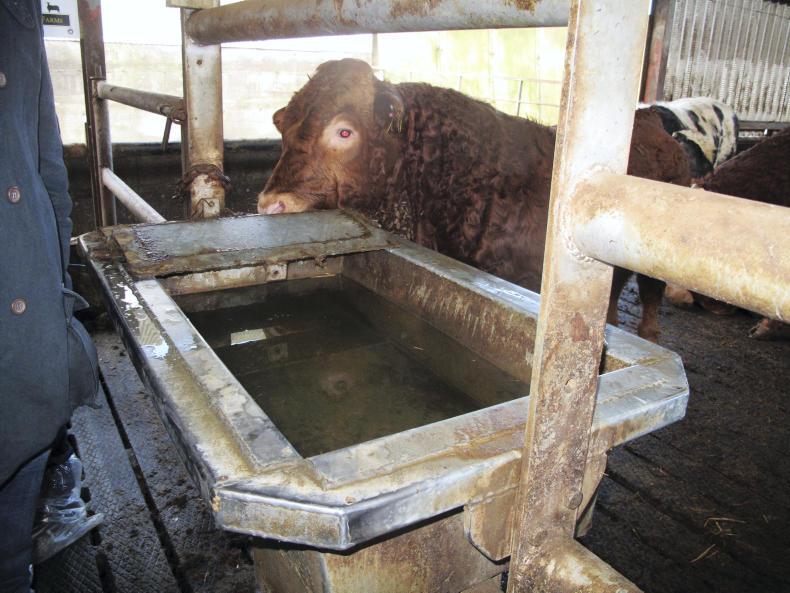
When talking about rumen health in a finishing animal, the main thing to avoid is acidosis. Acidosis is the rapid lowering of the pH within an animal’s rumen caused by a dietary problem. The pH within the rumen should be kept above six.
If you are to learn only one thing from this article, this should be it – the most important component of a healthy diet is water. According to Giggins, “water is the number one negative on Irish farms” when it comes to finishing. When talking about water, there are two factors: cleanliness and availability. A finishing animal eating 14-15kg of DM will drink up to 60l of water each day. Drinkers should be big enough so cattle can stick their mouth in and drink freely – avoid small, bowl drinkers.
When water in the diet is sufficient, then other dietary factors can be considered. Best practice to maintain rumen health is to avoid sudden changes in diet. However for many farmers the diet alteration period can actually be too long, which results in time being lost. According to Giggins, “a feed introduction and build-up period should last between seven and eight days – there should be no need for this to last 30 days, as in some cases”.
Straw
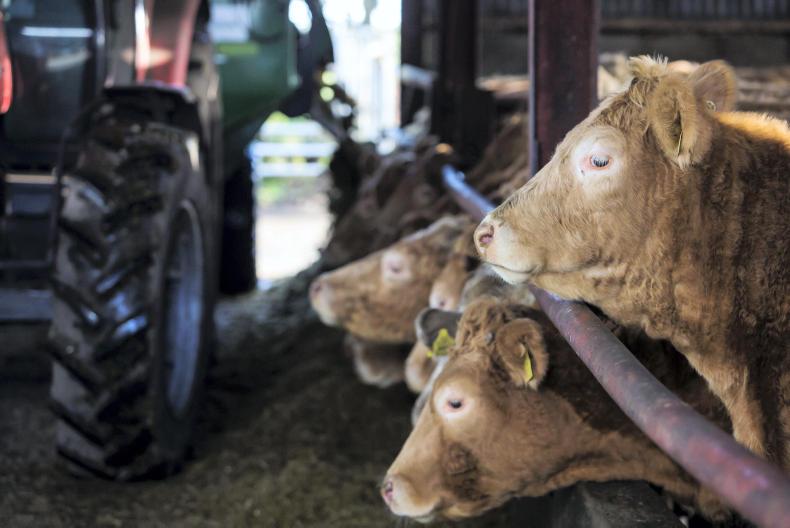
While concentrates are the main component of a finishing diet, they would be rendered useless without the correct inclusion of straw in the diet. Again, Giggins says that farmers can be too generous when it comes to straw: “Half a kilo of straw is enough in an animal’s diet – there is no need for one and a half kilos."
Ideally, straw should be chopped to a length of 5cm and included daily in a consistent total mixed ration (TMR) to reduce sorting.
Minerals
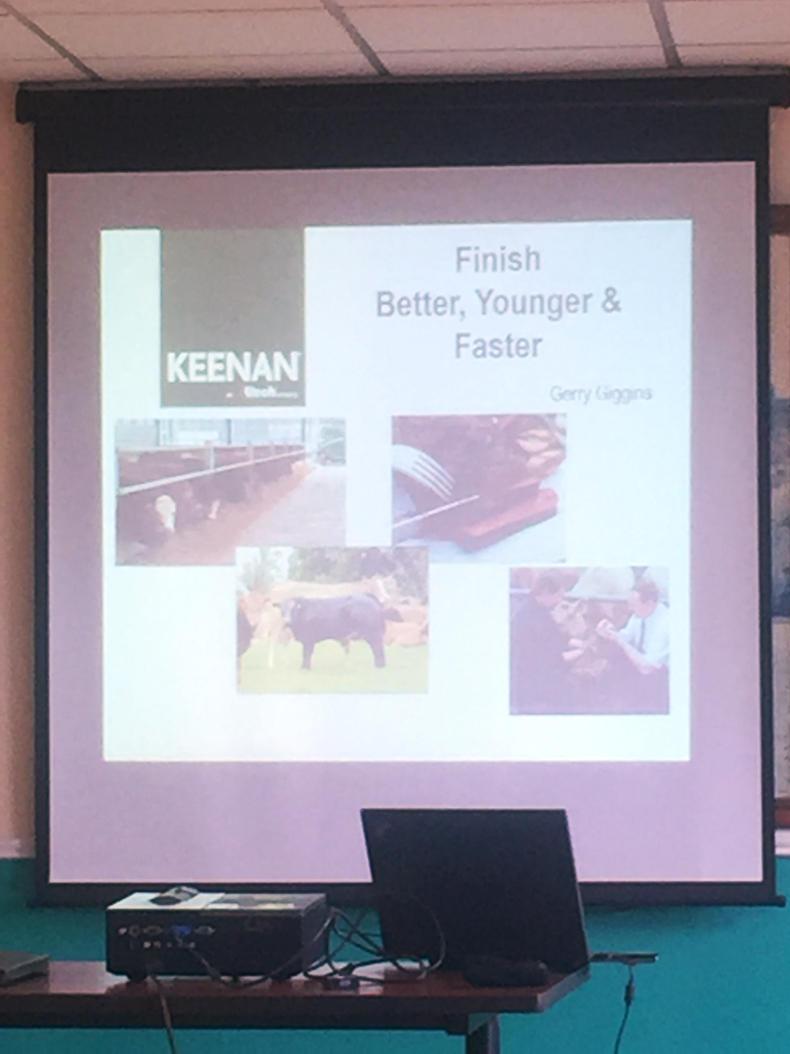
Richard Dudgeon explained that the inclusion of minerals can have a significant impact on the performance of finishing animals.
“Animals can potentially gain an extra 60g/head/day with the inclusion of minerals,” he said. The three major benefits that can be achieved through minerals is that they produce beef cheaper, produce better carcase weights and they maximise liveweight gain.
Keenan gets the nod of approval from customers
Beef trends: no letup on price pressure
Permanent monitoring of carcase trim to be introduced
Some of the highlights of the recent Keenan Alltech Open day in Borris, Co Carlow, were the dairy and beef seminars that ran every hour throughout the afternoon.
The beef seminar was centred on the topic of finishing cattle better, younger and faster. Animal nutritionist Gerry Giggins, along with Alltech beef nutritionist Richard Dudgeon, outlined the key components for finishing cattle correctly.
Don’t fail to prepare


The most important aspect of finishing cattle is to have a proper plan in place. It is not just as simple as putting cattle into the shed, or leaving them on grass and throwing in concentrates at random. First of all, it should be decided what age you plan on slaughtering your animals at – and, according to Giggins, the younger the better.
The next part of a finishing plan should deal with the diet. According to Giggins “the best feed for a farmer to buy is not necessarily the cheapest feed – it is the feed that is going to make an animal reach its performance targets and keep it healthy”. A good-quality feed will contain buffer and yeast in the mix to help prevent rumen problems.
The final part of a finishing plan is one that is more often than not forgotten about – measurements. It is vital to constantly monitor the performance of cattle by measuring the weight gain of the animal, first and foremost, but also by measuring the amount of feed taken in. While measuring feed intake can be more difficult, being aware of the amount of feed being given to an animal, less the amount of feed left behind (if any), will give a pretty good indication.
Rumen health relies on water

When talking about rumen health in a finishing animal, the main thing to avoid is acidosis. Acidosis is the rapid lowering of the pH within an animal’s rumen caused by a dietary problem. The pH within the rumen should be kept above six.
If you are to learn only one thing from this article, this should be it – the most important component of a healthy diet is water. According to Giggins, “water is the number one negative on Irish farms” when it comes to finishing. When talking about water, there are two factors: cleanliness and availability. A finishing animal eating 14-15kg of DM will drink up to 60l of water each day. Drinkers should be big enough so cattle can stick their mouth in and drink freely – avoid small, bowl drinkers.
When water in the diet is sufficient, then other dietary factors can be considered. Best practice to maintain rumen health is to avoid sudden changes in diet. However for many farmers the diet alteration period can actually be too long, which results in time being lost. According to Giggins, “a feed introduction and build-up period should last between seven and eight days – there should be no need for this to last 30 days, as in some cases”.
Straw

While concentrates are the main component of a finishing diet, they would be rendered useless without the correct inclusion of straw in the diet. Again, Giggins says that farmers can be too generous when it comes to straw: “Half a kilo of straw is enough in an animal’s diet – there is no need for one and a half kilos."
Ideally, straw should be chopped to a length of 5cm and included daily in a consistent total mixed ration (TMR) to reduce sorting.
Minerals

Richard Dudgeon explained that the inclusion of minerals can have a significant impact on the performance of finishing animals.
“Animals can potentially gain an extra 60g/head/day with the inclusion of minerals,” he said. The three major benefits that can be achieved through minerals is that they produce beef cheaper, produce better carcase weights and they maximise liveweight gain.
Keenan gets the nod of approval from customers
Beef trends: no letup on price pressure
Permanent monitoring of carcase trim to be introduced














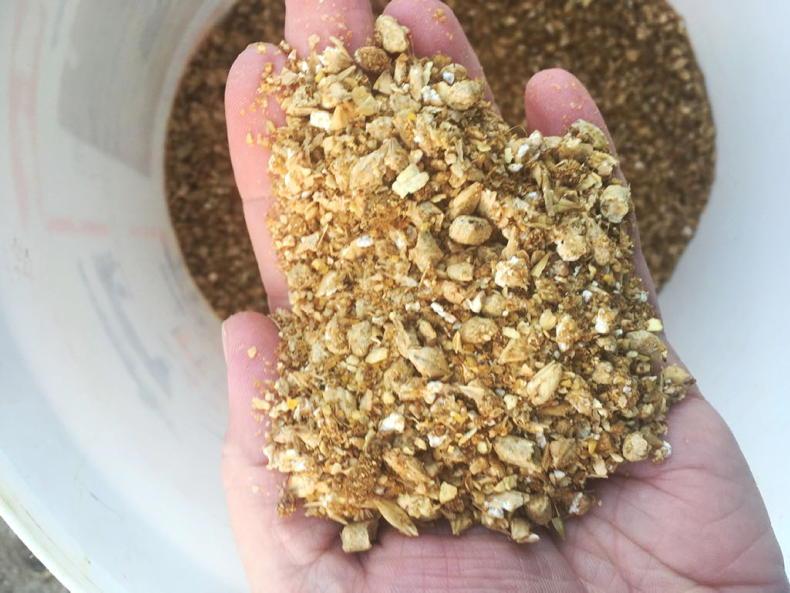

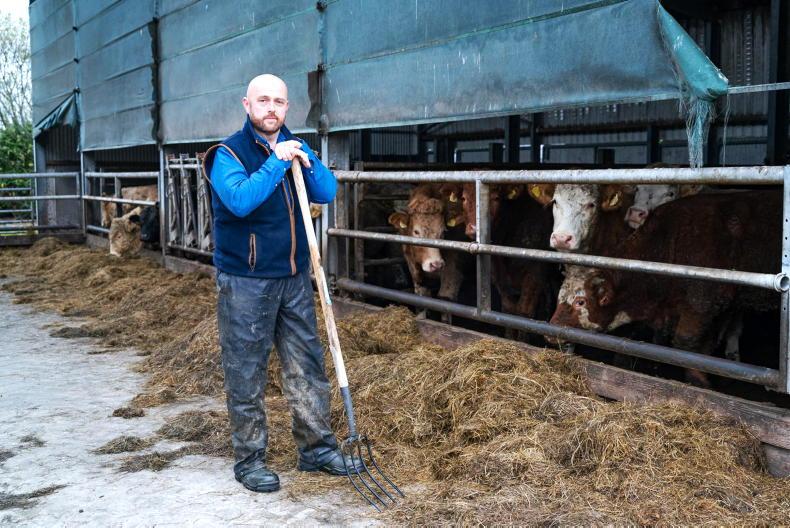


SHARING OPTIONS